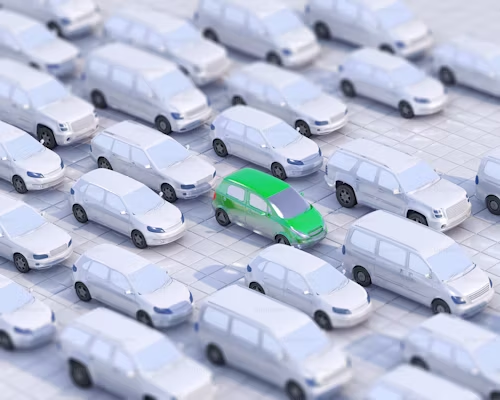
Discover how self-sustaining automobiles are revolutionizing the destiny of transportation. study the technology, benefits, demanding situations, and capability effect on urban mobility and society.
Introduction
self reliant motors (AVs) are at the vanguard of technological innovation, poised to revolutionize the destiny of transportation. these self-driving cars and trucks use a combination of sensors, cameras, synthetic intelligence (AI), and system gaining knowledge of to navigate and operate without human intervention. as the era advances, self sustaining automobiles promise to carry extensive changes to urban mobility, protection, efficiency, and the overall transportation atmosphere. This blog explores how self sufficient automobiles are shaping the future of transportation, the benefits they offer, the challenges they face, and their capacity impact on society.
expertise autonomous cars
self sufficient motors, also referred to as self-driving vehicles, are ready with superior technology that allow them to perceive their environment, make choices, and manipulate the vehicle with minimum or no human enter. those technologies include:
– Sensors: Lidar, radar, and ultrasonic sensors discover items, measure distances, and provide 360-degree cognizance.
– Cameras: high-definition cameras seize visible information for object popularity and visitors signal detection.
– AI and gadget getting to know: Algorithms process statistics from sensors and cameras to interpret the surroundings, are expecting behaviors, and make riding selections.
– GPS and Mapping: international positioning systems and particular maps assist AVs navigate and comply with routes appropriately.
ranges of Autonomy
The Society of automobile Engineers (SAE) defines six ranges of car autonomy, starting from level 0 (no automation) to level five (full automation):
– stage zero: No automation; the driving force controls the whole lot.
– level 1: driver help, which include adaptive cruise control or lane-keeping assistance.
– stage 2: Partial automation; the vehicle can manage guidance and acceleration, however the driving force ought to remain engaged.
– level 3: Conditional automation; the vehicle handles all driving responsibilities underneath sure conditions, however the driver should be prepared to take over.
– level 4: excessive automation; the automobile can operate with out human enter in specific situations or regions.
– stage 5: complete automation; the vehicle can pressure itself in all conditions without any human intervention.
advantages of independent automobiles

1. improved protection
one of the most giant benefits of self sustaining vehicles is their potential to enhance avenue safety. Human errors is a leading cause of site visitors injuries. by using disposing of the need for human drivers, AVs can lessen accidents due to distractions, fatigue, and impaired using. advanced sensors and AI enable AVs to hit upon and react to risks quicker than humans, in addition improving protection.
2. expanded efficiency and reduced Congestion
self sufficient motors can optimize using patterns, hold consistent speeds, and decrease prevent-and-move traffic, leading to advanced gas efficiency and decreased congestion. AVs can also speak with every other and with traffic management structures to coordinate moves, similarly improving traffic flow.
3. stronger Mobility
AVs have the ability to offer greater mobility for folks that cannot power, along with the aged, disabled, or the ones with out a driving force’s license. this will lead to accelerated independence and advanced best of existence for these people.
4. Environmental benefits
progressed visitors float and optimized driving can lead to reduced fuel consumption and decrease greenhouse gas emissions. moreover, the adoption of electric self reliant cars can further reduce the environmental impact of transportation.
5. value financial savings
autonomous vehicles can lessen the want for human drivers in numerous sectors, which includes logistics and public transportation, main to cost savings for agencies. additionally, AVs can decrease coverage prices because of their capacity to lessen injuries.
Demanding situations and considerations
1. Technological and Regulatory Hurdles
growing reliable and safe self reliant vehicles requires giant improvements in technology and big checking out. Regulatory frameworks should also evolve to cope with safety requirements, liability, and moral issues. ensuring cybersecurity to shield AVs from hacking and malicious assaults is another critical venture.
2. Infrastructure requirements
The enormous adoption of self sufficient automobiles requires considerable changes to existing infrastructure. This consists of updating roadways, site visitors alerts, and communication networks to aid vehicle-to-infrastructure (V2I) communication. investment in 5G technology is likewise critical to permit real-time records alternate among AVs and their environment.
3. moral and Social Implications
autonomous motors increase moral questions about decision-making in unavoidable coincidence eventualities. determining liability in injuries involving AVs is another complex trouble. additionally, the considerable adoption of AVs should cause activity displacement in driving-associated industries, necessitating group of workers retraining and assist.
4. Public attractiveness
Gaining public accept as true with and attractiveness of self sufficient vehicles is critical for their a success deployment. worries about protection, privacy, and the lack of riding autonomy should be addressed thru obvious communique, schooling, and demonstration of the advantages and reliability of AVs.
Effect on city Mobility and Society
1. Transformation of Public Transportation
autonomous vehicles have the capacity to revolutionize public transportation through imparting on-call for, green, and fee-powerful mobility answers. Self-driving buses and shuttles can perform on constant routes or dynamically adjust to passenger call for, improving the power and convenience of public transit.
2. redesign of urban areas
The adoption of AVs could lead to adjustments in city layout and infrastructure. With decreased want for parking spaces, cities can repurpose land for inexperienced areas, pedestrian zones, and blended-use tendencies. green site visitors go with the flow and reduced congestion also can improve air pleasantness and urban livability.
3. Evolution of personal Transportation
Self sufficient motors can exchange how human beings own and use private motors. The upward thrust of independent journey-sharing offerings can reduce the want for car possession, leading to a shift closer to a shared mobility version. This could result in fewer motors on the street, decreased traffic congestion, and decreased environmental effect.
4. effect on Logistics and shipping
self sufficient automobiles can appreciably impact the logistics and shipping enterprise with the aid of allowing efficient, 24/7 operations. Self-using vehicles can delivery items over long distances with out the want for driving force breaks, decreasing shipping times and prices. autonomous shipping robots can also handle closing-mile deliveries, improving convenience for clients.
FAQs
1. What are self sufficient automobiles?
self reliant motors, or self-using automobiles, are equipped with technologies that permit them to navigate and perform with out human intervention, the usage of sensors, cameras, AI, and device learning.
2. What are the degrees of car autonomy?
The degrees range from degree 0 (no automation) to degree 5 (full automation), with varying levels of driving force assistance and automation.
3. What are the blessings of independent cars?
advantages include more suitable protection, elevated performance, decreased congestion, greater mobility, environmental advantages, and price savings.
4. What demanding situations do independent automobiles face?
demanding situations encompass technological and regulatory hurdles, infrastructure necessities, ethical and social implications, and public reputation.
5. How will independent automobiles effect urban mobility?
AVs can rework public transportation, redecorate urban areas, evolve personal transportation fashions, and effect logistics and delivery industries.
conclusion
independent vehicles are poised to reshape the future of transportation, supplying numerous blessings in phrases of protection, performance, mobility, and environmental effect. however, realizing their full potential requires overcoming extensive challenges, such as technological, regulatory, and societal hurdles. As AV technology keeps to boost and gain acceptance, it promises to transform urban mobility, decorate fine of life, and drive financial increase. Embracing this innovation will require collaboration among policymakers, agencies, and groups to make sure a clean and useful transition to an self reliant transportation future.





